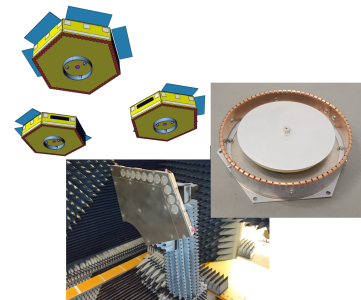L-band antenna for next generation SMOS missions

To design and experimentally demonstrate an hexagonal L-band array antenna for next generation SMOS missions.
ESA?s Soil Moisture and Ocean Salinity (SMOS) mission launched in 2009 is based on an L-band interferometric radiometer providing images of the entire earth globe every three days. Several studies have been conducted in the past few years to define a different antenna configuration which could allow to improve the image quality and simultaneously reduce the imaging time. An hexagonal array configuration with reduced inter-element distance emerged as the most promising solution with a halved spatial resolution and a revisit period reduced by a factor 3.This activity shall focus on the design of an hexagonal array antenna for the next generation SMOS radiometric instrument operating in L-band. The array needs a reduced element spacing, down to 0.57 lambda (at 1413.5 MHz), to allow an alias-free image. The activity shall include the manufacturing and test of a breadboard. Specifically, this breadboard, with a reduced number of elements and including a ground plane large enough to avoid background radiation, shall be defined and experimentally characterised. The polarisation axis of the array elements shall rotate with the arm, contrary to SMOS. The reflection coefficient over an adequate temperature range, the radiation patterns, the directivity and the gain shall be characterised for the isolated element and for several elements embedded in the hexagonal array. The manufactured element shall fulfil the SMOS requirements in terms of loss, cross-polarization and port isolation. Moreover, a reduced mass compared to the current design is also required.The activity encompasses the following tasks:- Review of requirements - Critical design- Manufacture and characterisation of the breadboard
